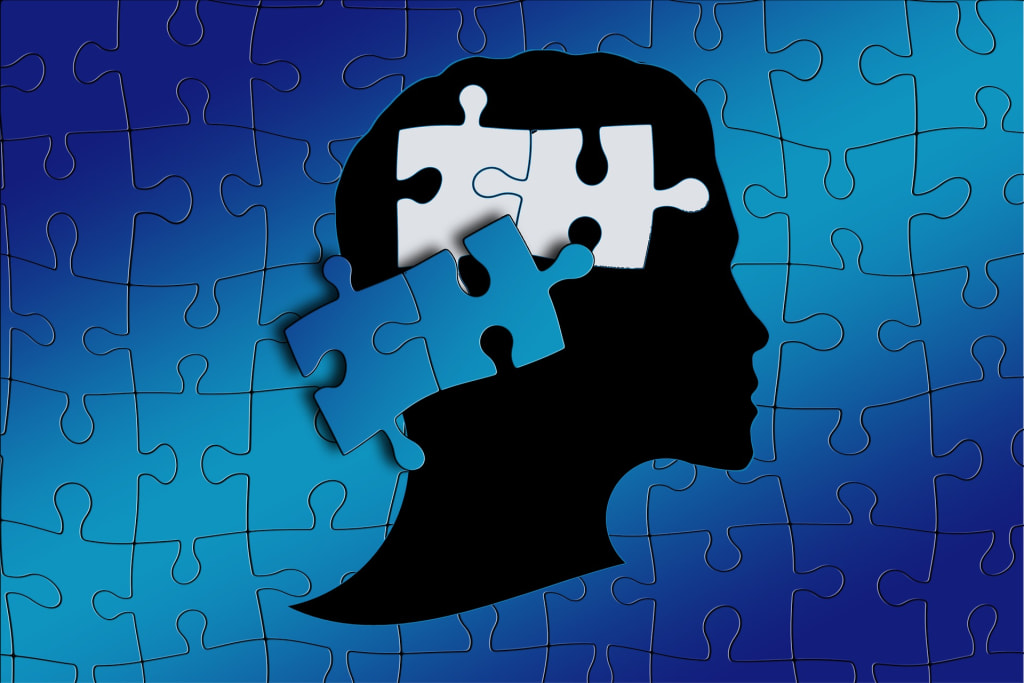Navigating the Spectrum: A Comprehensive Guide to Understanding Autism
Parent education

Navigating the Spectrum: A Comprehensive Guide to Understanding Autism
Autism is a neurological disorder that affects communication and social interaction skills. It is a spectrum disorder, which means that individuals with autism have varying degrees of difficulty with social interaction, communication, and repetitive behaviors. Autism is a complex condition, and understanding it requires knowledge of its types, causes, symptoms, diagnosis, and treatment options. This guide provides a comprehensive overview of autism and aims to help individuals, families, caregivers, educators, and employers gain a deeper understanding of autism and how to navigate its spectrum.
What is autism?
Autism, or autism spectrum disorder (ASD), is a neurological condition that affects how individuals interact with others and perceive the world around them. Autism is a spectrum disorder, which means that individuals with autism have a range of symptoms, from mild to severe. Autism affects communication and social interaction skills, and individuals with autism may have repetitive behaviors or interests. The symptoms of autism typically appear in early childhood, and they can last throughout an individual's life.
There is no known cure for autism, but early diagnosis and intervention can improve an individual's quality of life. Autism is a complex condition, and there is much that is still unknown about it. However, research in recent years has helped to shed light on the causes and treatment options for autism.
Types of autism spectrum disorder
Autism spectrum disorder is a term that encompasses a range of conditions that affect communication and social interaction skills. There are several types of autism spectrum disorder, including Asperger's syndrome, pervasive developmental disorder-not otherwise specified (PDD-NOS), and childhood disintegrative disorder. Each type of autism spectrum disorder has its own set of symptoms and characteristics.
Asperger's syndrome is a milder form of autism, and individuals with Asperger's syndrome typically have average to above-average intelligence. They may have difficulty with social interaction and may have intense interests in specific topics. PDD-NOS is a diagnosis given to individuals who do not meet the criteria for a specific type of autism spectrum disorder but still have significant impairments in communication and social interaction skills. Childhood disintegrative disorder is a rare form of autism in which children develop typically until the age of 3 or 4 and then suddenly lose skills in communication, social interaction, and other areas.
Causes of autism
The exact causes of autism are not fully understood, but research suggests that a combination of genetic and environmental factors may play a role. Studies have shown that there are differences in the brains of individuals with autism, and there may be abnormalities in the way that the brain develops. Some research has suggested that certain genes may be associated with an increased risk of autism, but no single gene has been identified as the cause of autism.
Environmental factors that have been associated with an increased risk of autism include prenatal exposure to toxins, such as lead or mercury, and maternal infections during pregnancy. However, it is important to note that not all individuals with autism have been exposed to these environmental factors, and not all individuals who have been exposed to these factors develop autism.
Signs and symptoms of autism
The signs and symptoms of autism can vary widely, but some common characteristics include:
Difficulty with social interaction, such as making eye contact, understanding social cues, and developing friendships
Delayed language development or difficulty with communication, such as using gestures instead of words, repeating phrases, or having a flat or monotone voice
Repetitive behaviors or interests, such as lining up toys, repeating routines, or having intense interests in specific topics
Sensory sensitivities, such as being sensitive to sounds, textures, or tastes
Difficulty with changes in routine or unexpected events
It is important to note that not all individuals with autism have all of these symptoms, and some individuals may have additional symptoms or characteristics.
Diagnosis of autism
Diagnosing autism can be a complex process, and it typically involves a comprehensive evaluation by a team of specialists, including a pediatrician, psychologist, and speech therapist. The evaluation may include a review of the individual's developmental history, observations of the individual's behavior, and standardized tests.
The diagnostic criteria for autism have changed over time, but the current criteria are outlined in the Diagnostic and Statistical Manual of Mental Disorders, Fifth Edition (DSM-5). To be diagnosed with autism, an individual must have persistent deficits in social communication and social interaction skills, as well as restricted, repetitive patterns of behavior, interests, or activities. These symptoms must be present in early childhood, and they must cause significant impairment in social, occupational, or other areas of functioning.
Treatment options for autism
There is no known cure for autism, but there are several treatment options that can help individuals with autism improve their quality of life. The most effective treatments for autism are typically behavioral and educational interventions that focus on developing social communication and interaction skills, as well as reducing repetitive behaviors.
Some common behavioral and educational interventions for autism include:
Applied behavior analysis (ABA): ABA is a therapy that focuses on teaching new skills and behaviors through positive reinforcement. ABA is one of the most widely used therapies for autism, and it has been shown to be effective in improving social communication and interaction skills.
Speech therapy: Speech therapy can help individuals with autism improve their communication skills, including their ability to understand and use language.
Occupational therapy: Occupational therapy can help individuals with autism develop skills for daily living, such as dressing, grooming, and using utensils.
Social skills training: Social skills training focuses on developing social communication and interaction skills, such as making eye contact, understanding social cues, and developing friendships.
Special education: Special education programs can provide individualized instruction and support for students with autism.
Therapies for autism spectrum disorder
In addition to behavioral and educational interventions, there are several therapies that can be helpful for individuals with autism spectrum disorder. These therapies are designed to address specific symptoms or issues related to autism.
Some common therapies for autism spectrum disorder include:
Sensory integration therapy: Sensory integration therapy can help individuals with autism who have sensory sensitivities to better manage their reactions to sensory stimuli.
Music therapy: Music therapy can help individuals with autism improve their communication and social interaction skills through music-based activities.
Animal-assisted therapy: Animal-assisted therapy can be helpful for individuals with autism who have difficulty with social interaction, as animals can provide a non-threatening and comforting presence.
Support for families and caregivers of individuals with autism
Caring for a loved one with autism can be challenging, and it is important for families and caregivers to have access to support and resources. There are several organizations and support groups that provide information, resources, and advocacy for families and caregivers of individuals with autism.
Some common resources for families and caregivers of individuals with autism include:
Autism Speaks: Autism Speaks is a national organization that provides information, resources, and advocacy for individuals with autism and their families.
National Autism Association: The National Autism Association provides information and resources for families and caregivers of individuals with autism, as well as advocacy and support.
Autism Society: The Autism Society is a national organization that provides support, information, and advocacy for individuals with autism and their families.
Education and employment for individuals with autism spectrum disorder
Education and employment can be challenging for individuals with autism spectrum disorder, but there are several resources and programs available to help. Special education programs can provide individualized instruction and support for students with autism, and vocational training programs can help individuals with autism develop skills for employment.
Some common resources for education and employment for individuals with autism spectrum disorder include:
Job Accommodation Network: The Job Accommodation Network provides information and resources for employers and employees with disabilities, including autism.
Autism at Work: Autism at Work is a program that provides training and support for employers who want to hire individuals with autism.
College Autism Network: The College Autism Network provides resources and support for college students with autism.
Advocacy and awareness for autism
Advocacy and awareness are important for individuals with autism and their families, as well as for society as a whole. Increased awareness and understanding of autism can help to reduce stigma and improve access to resources and support.
Some common advocacy and awareness organizations for autism include:
Autism Society: The Autism Society is a national organization that provides support, information, and advocacy for individuals with autism and their families.
Autism Speaks: Autism Speaks is a national organization that provides information, resources, and advocacy for individuals with autism and their families.
Autistic Self Advocacy Network: The Autistic Self Advocacy Network is an organization that advocates for the rights and interests of individuals with autism.
Conclusion
Autism is a complex and diverse condition that affects millions of people worldwide. Understanding the spectrum of autism requires knowledge of its types, causes, symptoms, diagnosis, and treatment options. This comprehensive guide has provided an overview of autism and offered practical advice on how to understand and manage its various manifestations. Whether you're a parent, caregiver, educator, or someone who has been diagnosed with autism, this guide is an essential resource for anyone looking to gain a deeper understanding of this complex condition. By increasing awareness and understanding of autism, we can help to reduce stigma and improve access to resources and support for individuals with autism and their families.
About the Creator
Enjoyed the story? Support the Creator.
Subscribe for free to receive all their stories in your feed. You could also pledge your support or give them a one-off tip, letting them know you appreciate their work.





Comments
There are no comments for this story
Be the first to respond and start the conversation.